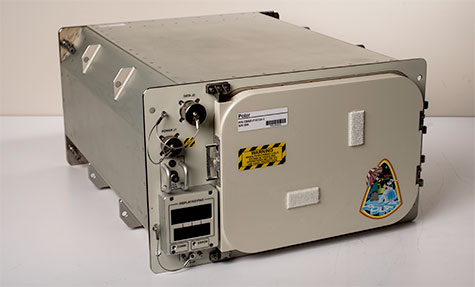Need more information? Contact us
 UAB engineers will attend a ceremony at Johnson Space Center in Houston, Texas, on Friday, July 22, to accept a pair of NASA Group Achievement Awards.
UAB engineers will attend a ceremony at Johnson Space Center in Houston, Texas, on Friday, July 22, to accept a pair of NASA Group Achievement Awards.
The first award recognizes the UAB Engineering and Innovative Technology Development team for its work on the Polar project, and another for its role with the International Space Station Cold Stowage team for providing “exceptional hardware development, engineering, integration and operation of cold stowage assets supporting research utilization of the International Space Station.”
The awards put the spotlight on EITD, a little-known but highly accomplished part of the School of Engineering that has been producing high-quality equipment for space-related research for more than a decade.
“These awards are a well-deserved testament to the excellent work done by Dr. Lee Moradi and the EITD team over an extended period of time,” said Iwan Alexander, Ph.D., dean of the UAB School of Engineering. “This is a reflection of the team’s ability not only to design and build high-quality specialized hardware, but also to provide the critical support necessary to the success of space-flight experiments.”
Earlier this week, four UAB-designed Polar freezer units launched into space on board a SpaceX rocket as part of a payload to supply the ISS.
These units, which can maintain temperatures as low as negative 80 degrees Celsius, are the latest of a string of space freezers created by the UAB EITD team, which is led by Lee Moradi, Ph.D. Previous models include the MERLIN, or Microgravity Experiment Research Locker Incubator, and the GLACIER, or General Laboratory Active Cryogenic ISS Experiment Refrigerator.
| The primary function of Polar is to provide a freezing and storage unit for a broad range of science samples during transportation to and from the ISS and while aboard the ISS. The ability these units have to accommodate samples of various dimensions and shapes will provide NASA with the capability to satisfy the needs of future science experiments conducted aboard the ISS. |
The primary function of Polar is to provide a freezing and storage unit for a broad range of science samples during transportation to and from the ISS and while aboard the ISS. The ability these units have to accommodate samples of various dimensions and shapes will provide NASA with the capability to satisfy the needs of future science experiments conducted aboard the ISS.
The four units being launched this month will join eight other units already in use on board the ISS — four MERLIN and four GLACIER units.
“Once these Polar units reach the ISS, that will give us 12 total units in orbit, which we monitor from our facility at UAB,” said Dan Connor, MERLIN project manager. “We have the capability to speak directly with astronauts on the space station if on-site adjustments are needed, but we designed the units so that we can troubleshoot most issues remotely.”
As an example, Connor cites an instance when a unit was not drying out properly. He received an alert on his phone, and the team was able to quickly initiate a defrost cycle on the unit and correct the problem. “In cases like that, we’re sometimes aware of the problem before the NASA controllers,” he said.
Maintenance on the units between missions is managed strictly by UAB alone. “Units get rotated out after three years in orbit,” Connor said. “Insulation in a vacuum degrades over time, so they come back here for us to recondition or re-service the equipment as needed.”
Connor says EITD members typically are on-site only when MERLIN units are on board, and they must monitor the units from takeoff to docking on the ISS — a trip that could take up to two days.
“There have been times when people have been at the launch site and were able to watch the space station pass overhead, and then you see the rocket launch immediately after … and yet you have to wait a day and a half before it finally catches up to it,” Connor said. “It gives you an interesting perspective when you consider the speed and the distance, and the fact that we have someone monitoring it at all times from our office at UAB.”